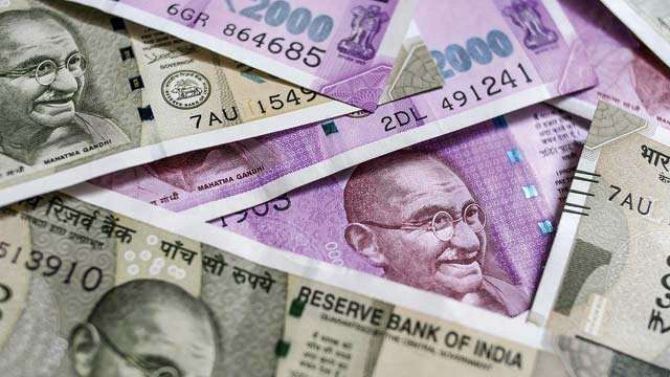Accounting for the first Advance Estimates for 2017-18, an additional planned borrowing of Rs 200 billion, the fiscal deficit could come in at 3.35 per cent of GDP.

When Finance Minister Arun Jaitley presents the 2018-19 Union Budget on February 1, he may announce a fiscal deficit number for 2017-18 quite close to the target of 3.2 per cent of gross domestic product (GDP) in spite of additional borrowing, higher-than-anticipated spending on flagship schemes, and projected shortfall in the Goods and Services Tax (GST) and spectrum sales.
Accounting for the first Advance Estimates for 2017-18, an additional planned borrowing of Rs 200 billion, the fiscal deficit could come in at 3.35 per cent of GDP.
But even that can be negated and the fiscal deficit be brought down to meet the Budget Estimates, if Rs 200 billion is not withdrawn from the National Small Savings Scheme, analysts say.
To ensure there is no substantial deviation from the fiscal target, the finance ministry is working on three fronts: Asking back unspent allocations from other departments or cutting the gross budgetary support (GBS); carrying forward certain spending items, including subsidy payments; and equally distributing integrated GST proceedings between the Centre and states.
In what could be the first time for the rail ministry, the finance ministry may cut its GBS by Rs 150 billion.
There have also been tens of billions of rupees per year in unspent capital allocations returned by the defence ministry in the past. Last year, it returned around Rs 70 billion.
“Departments either return unspent funds or are not given the amount allocated if these are not required.
"But this year, they have been asked to be more thorough with their accounts,” said an official.
In the year of a nationwide GST roll-out and the uncertainty that would introduce in revenue projections, “every rupee counts,” the person said.
Meanwhile, to ease the flow of funds for both the Centre and states, the GST Council, last week, decided to distribute the integrated GST of Rs 350 billion equally between them.
This prompted Finance Secretary Hasmukh Adhia to say that even the indirect tax collection target would be met for the current fiscal year (FY18).
There are concerns, not yet fully put to rest, that the shortfall from the GST this year could be as high as Rs 400-500 billion.
The total subsidy bill for the year is budgeted at Rs 2.4 trillion.
Officials said that for subsidy and other items, some payments could be rolled over till after March 31.
Earlier this month, the government announced that it would borrow an additional Rs 200 billion from the bond markets in 2017-18, as opposed to Rs 500 billion announced last month, primarily because the Reserve Bank of India would pay a higher than-anticipated surplus to the Centre, and the dividend target from state-owned companies would also be met.
When the additional borrowing of Rs 500 billion was announced in late December, analysts expected the fiscal deficit to cross 3.5 per cent of GDP, against the target 3.2 per cent.
Photograph: Reuters












 © 2025
© 2025